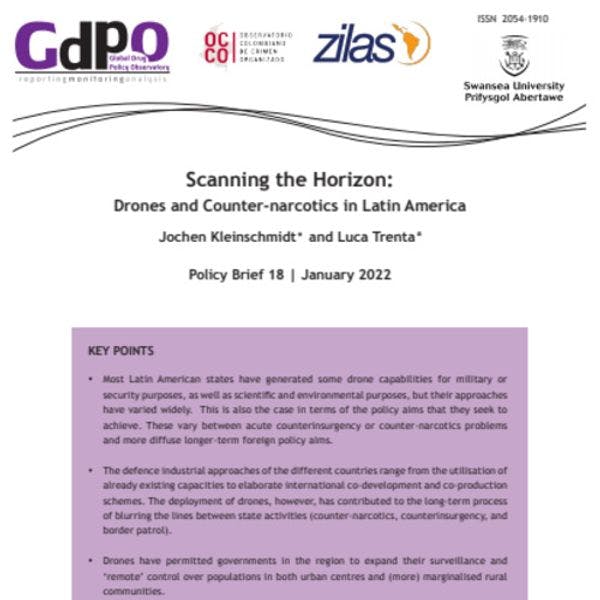Scanning the horizon: Drones and counter-narcotics in Latin America
By Jochen Kleinschmidt and Luca Trenta
Key points
• Most Latin American states have generated some drone capabilities for military or security purposes, as well as scientific and environmental purposes, but their approaches have varied widely. This is also the case in terms of the policy aims that they seek to achieve. These vary between acute counterinsurgency or counter-narcotics problems and more diffuse longer-term foreign policy aims.
• The defence industrial approaches of the different countries range from the utilisation of already existing capacities to elaborate international co-development and co-production schemes. The deployment of drones, however, has contributed to the long-term process of blurring the lines between state activities (counter-narcotics, counterinsurgency, and border patrol).
• Drones have permitted governments in the region to expand their surveillance and ‘remote’ control over populations in both urban centres and (more) marginalised rural communities.
• Despite a few voices calling for weaponisation, drones remain unarmed and no Latin American government has carried out a kinetic operation. Drones, however, have participated in more indirect forms of violence (e.g. crop spraying) and the intelligence provided by drones has aided governments in kill/capture operations against drug traffickers, guerrilla members, and (illegal) border crossers.
